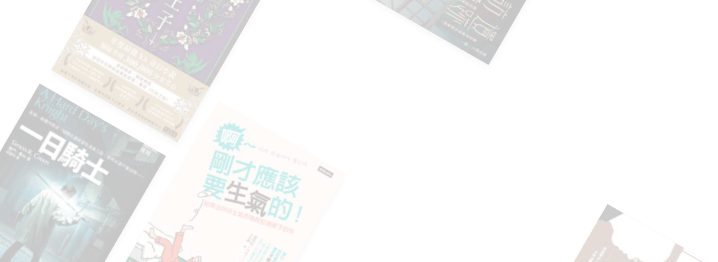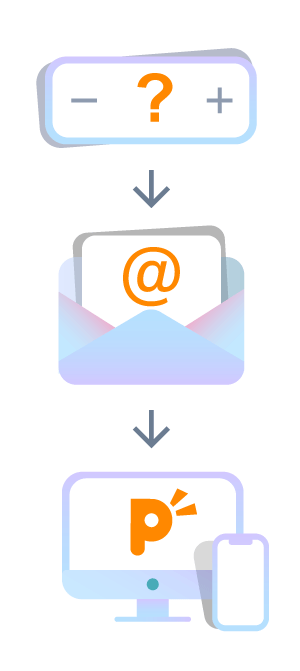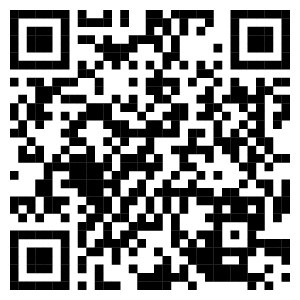Avoidance Action by Rudder

A 300 meter long 32 meter wide vessel sail over the sea surface will take some space at any minute. Another 150 meter 20 meter wide vessel will also take some space. If these two vessel’s spaces don’t overlap at a specific moment, there will be no collision risk between these two vessels. If the collision risk do exist, the spaces took by these two vessel will due to overlap at some time lapsed. To avoid the overlapped space will help to reduce the collision risk. This is the first concept of collision avoidance. In this chapter, we will study the relative position change, i.e. occupied space change, when give-way vessel takes the avoidance action.
We may divide the turning process into three stages: this turning diagram is a single screw, fixed pitch propeller and single rudder ship. Other vessel construction may have different characteristics. Reader should use their knowledge to apply these points we discussed here.
First stage: the rudder is put over, there will be a still time which seems the ship does not response at all then she will incline to the side where rudder is put over.
Second stage: ship's heading changed rapidly but her body still roughly follows the original track and ship flip over to the opposite side which rudder is put over.
Third stage: ship's heading changed in regulated rate and ship's body actually leaves the original course line. This is the stage ship can gain abeam distance from her original course line.
INITIAL TURNING WITHIN 2 SHIP'S LENGTH
In this stage, represented by the first red line vessel shape in the 0.25 nm range, the turning curve are almost identical regardless how much rudder we have used to change the heading. But, remember this is only the track of pivot point. The ship body is conducting a serious change from the bow to the stern. The ship bow will turn more inside the track of pivot point. The ship stern pushed by the rudder plate will always be leaved outside of the track of pivot point. The pivot point is the point neither moving inside nor moving outside when the ship body rotated by the rudder effect.
Serpent swing
If a small rock is dead ahead of a snake, the snake can still pass it without change its original heading. It body is not going in the same direction as its heading. Its body constantly sways to both side leave some ahead ground along its track untouched.
Since the ship's body won't leave its original track at the initial stage as we can see in last paragraph. After two ship length’s advance, the pivot point will begin to leave it's original course line. From here up to 4 ship's length, the ship's stern will not well clear of the original course. If the small target’s range is in 2-4 ship's length ahead, we have to sway it like the serpent to clear.
The proper maneuvering in this situation should use the rudder to swing off the ship's bow first, and then at some stage put it hard over to opposite side to kick off the ship stern out of the collision space.
At what stage is appropriate to put the counter rudder over?
In theory, the ideal position should be when the target is abeam of our pivot point. But, we should make some allowance for the over-swing when the counter rudder put in use. For the picture above lost control due to hard port turning, the big vessel hit a small vessel in anchorage, the maneuvering should use the counter rudder 10 or 20 degrees before own ship parallel to the anchorage vessel to stop the swing. Then, see if own ship have the tendency to continue the turn and finally parallel to it. If not, apply the rudder again to parallel. If the swing is too fast and about to over-swing to hit the target by stern, the counter rudder should apply more to check the swing and keep the same heading as the anchorage vessel.
We may divide the turning process into three stages: this turning diagram is a single screw, fixed pitch propeller and single rudder ship. Other vessel construction may have different characteristics. Reader should use their knowledge to apply these points we discussed here.
First stage: the rudder is put over, there will be a still time which seems the ship does not response at all then she will incline to the side where rudder is put over.
Second stage: ship's heading changed rapidly but her body still roughly follows the original track and ship flip over to the opposite side which rudder is put over.
Third stage: ship's heading changed in regulated rate and ship's body actually leaves the original course line. This is the stage ship can gain abeam distance from her original course line.
INITIAL TURNING WITHIN 2 SHIP'S LENGTH
In this stage, represented by the first red line vessel shape in the 0.25 nm range, the turning curve are almost identical regardless how much rudder we have used to change the heading. But, remember this is only the track of pivot point. The ship body is conducting a serious change from the bow to the stern. The ship bow will turn more inside the track of pivot point. The ship stern pushed by the rudder plate will always be leaved outside of the track of pivot point. The pivot point is the point neither moving inside nor moving outside when the ship body rotated by the rudder effect.
Serpent swing
If a small rock is dead ahead of a snake, the snake can still pass it without change its original heading. It body is not going in the same direction as its heading. Its body constantly sways to both side leave some ahead ground along its track untouched.
Since the ship's body won't leave its original track at the initial stage as we can see in last paragraph. After two ship length’s advance, the pivot point will begin to leave it's original course line. From here up to 4 ship's length, the ship's stern will not well clear of the original course. If the small target’s range is in 2-4 ship's length ahead, we have to sway it like the serpent to clear.
The proper maneuvering in this situation should use the rudder to swing off the ship's bow first, and then at some stage put it hard over to opposite side to kick off the ship stern out of the collision space.
At what stage is appropriate to put the counter rudder over?
In theory, the ideal position should be when the target is abeam of our pivot point. But, we should make some allowance for the over-swing when the counter rudder put in use. For the picture above lost control due to hard port turning, the big vessel hit a small vessel in anchorage, the maneuvering should use the counter rudder 10 or 20 degrees before own ship parallel to the anchorage vessel to stop the swing. Then, see if own ship have the tendency to continue the turn and finally parallel to it. If not, apply the rudder again to parallel. If the swing is too fast and about to over-swing to hit the target by stern, the counter rudder should apply more to check the swing and keep the same heading as the anchorage vessel.
In one N.M. distance, it is clear that the ship's avoidance action by the rudder along should take three separate parts of the ship body movement into consideration whenever she conduct a emergency turn to avoid collision. These are ship's bow, pivot point and her stern.
At the first stage, the whole body advance is unavoidable and the side displacement is not apparent. Heading change about one point and can make a transverse away from its original course line about 15 meter for a 300 meter long and 30 meter wide vessel( 300 meter x 1/4x sin 11.25 = 15 meter). Ship's stern can create a side displacement more vivid and quickly than the ship's stem ( 300 meter x 3/4 x sin 11.25 = 45 meter). For any target size bigger than 15 meter, any action you take to avoid the collision is too late because you cannot clear the possible area of collision completely.
In the second stage, the heading changed considerably and the side displacement is varied as vessel’s turning ability, but the ship's body still cannot create enough side displacement more than own ship's length. The whole ship body still has the residue speed to move along the original course line and flip over to other side of the rudder order used with 5 - 15 degree list. The ship's stern swing out toward the possible area of collision and the distance to it still reducing, but the side displacement to avoid danger is not enough for a large target.
In the final stage of turning, ship's stem and body moving sideway is usually enough to avoid the possible area of collision. But," does the ship's stern can also clear of the possible area of collision?"
We can roughly say that the turning action taken to avoid the target inside one N.M. range. The more closer to the target will have more parts of the ship's body have to take into account.
The possible collision parts of own ship in the collision
In first stage, will be bow, midship section and stern.
In second stage, will be midship section and stern.
In the last stage, will be the ship's stern.
At the first stage, the whole body advance is unavoidable and the side displacement is not apparent. Heading change about one point and can make a transverse away from its original course line about 15 meter for a 300 meter long and 30 meter wide vessel( 300 meter x 1/4x sin 11.25 = 15 meter). Ship's stern can create a side displacement more vivid and quickly than the ship's stem ( 300 meter x 3/4 x sin 11.25 = 45 meter). For any target size bigger than 15 meter, any action you take to avoid the collision is too late because you cannot clear the possible area of collision completely.
In the second stage, the heading changed considerably and the side displacement is varied as vessel’s turning ability, but the ship's body still cannot create enough side displacement more than own ship's length. The whole ship body still has the residue speed to move along the original course line and flip over to other side of the rudder order used with 5 - 15 degree list. The ship's stern swing out toward the possible area of collision and the distance to it still reducing, but the side displacement to avoid danger is not enough for a large target.
In the final stage of turning, ship's stem and body moving sideway is usually enough to avoid the possible area of collision. But," does the ship's stern can also clear of the possible area of collision?"
We can roughly say that the turning action taken to avoid the target inside one N.M. range. The more closer to the target will have more parts of the ship's body have to take into account.
The possible collision parts of own ship in the collision
In first stage, will be bow, midship section and stern.
In second stage, will be midship section and stern.
In the last stage, will be the ship's stern.
Experience:
Bridge Simulator Instructor, EVERGREEN Seafarer Training Center, 6 years
■ Instructor, collision avoidance and human element, Master Mariner's
Association of the R.O.C. 3 hours ■
Instructor, Seaman DG cargo training course, National Taiwan Ocean University, 1 hour
BRM Instructor, EVERGREEN Seafarer Training Center, 4 years
Marine 3/2 Officer in OOCL, 3 years
Marine 2/Chief Officer in Evergreen, 6 years
Marine Master in Container Vessel, EVERGREEN Marine Corp., 7 Months
Shipside Chief Officer in Keelung port, 3.5 Years
Main Office Port Chief in Operation Department, 2 Years
Port Captain, Marine Technology Section, EVERGREEN Marine Corp.
■Department Head of Navigation Department, Taipei Marine Technology University
Port Captain, Marine Technology Section, WAN HAI line.
■ Graduated from the Department of Navigation, National Taiwan Ocean University 1980
Major Project attended:
OOCL receiving German flag 1st to 3rd vessel / third mater for 3 times,
Bridge Simulator Instructor, EVERGREEN Seafarer Training Center, 6 years
■ Instructor, collision avoidance and human element, Master Mariner's
Association of the R.O.C. 3 hours ■
Instructor, Seaman DG cargo training course, National Taiwan Ocean University, 1 hour
BRM Instructor, EVERGREEN Seafarer Training Center, 4 years
Marine 3/2 Officer in OOCL, 3 years
Marine 2/Chief Officer in Evergreen, 6 years
Marine Master in Container Vessel, EVERGREEN Marine Corp., 7 Months
Shipside Chief Officer in Keelung port, 3.5 Years
Main Office Port Chief in Operation Department, 2 Years
Port Captain, Marine Technology Section, EVERGREEN Marine Corp.
■Department Head of Navigation Department, Taipei Marine Technology University
Port Captain, Marine Technology Section, WAN HAI line.
■ Graduated from the Department of Navigation, National Taiwan Ocean University 1980
Major Project attended:
OOCL receiving German flag 1st to 3rd vessel / third mater for 3 times,
Details
Review
0 ratings
1 stars
0%
2 stars
0%
3 stars
0%
4 stars
0%
5 stars
0%
Write a review
Eligible to write reviews after purchasing products or add to Library







